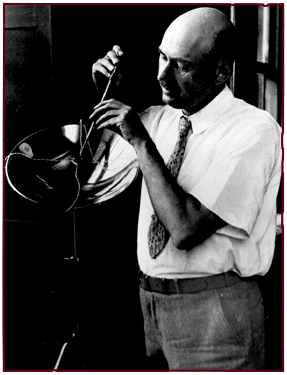

Robert H. Goddard (1882-1945) was one of the three most prominent pioneers of rocketry and spaceflight theory. He earned his Ph.D. in physics at Clark University in 1911 and went on to become head of the Clark physics department and director of its physical laboratories. He began to work seriously on rocket development in 1909 and is credited with launching the world¹s first liquid-propellant rocket in 1926. He continued his rocket development work with the help of a few technical assistants throughout the remainder of his life. Although he developed and patented many of the technologies later used on large rockets and missiles--including film cooling, gyroscopically controlled vanes, and a variable-thrust rocket motor--only the last of these technologies contributed directly to the furtherance of rocketry in the United States. Goddard kept most of the technical details of his inventions a secret and thus missed the chance to have the kind of influence his real abilities promised. At the same time, he was not good at integrating his inventions into a workable system, so his own rockets failed to reach the high altitudes he sought. See Milton Lehman, Robert H. Goddard: A Pioneer of Space Research (New York: Da Capo, 1988); J.D. Hunley, ³The Enigma of Robert H. Goddard,² Technology and Culture (1995); ³Robert H. Goddard,² biographical file, NASA Historical Reference Collection, NASA History Division, NASA Headquarters, Washington, DC.

Updated February 8, 2005